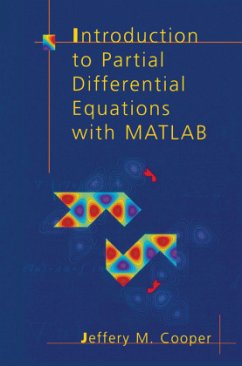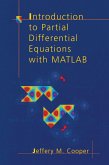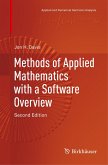Overview The subject of partial differential equations has an unchanging core of material but is constantly expanding and evolving. The core consists of solution methods, mainly separation of variables, for boundary value problems with constant coeffi cients in geometrically simple domains. Too often an introductory course focuses exclusively on these core problems and techniques and leaves the student with the impression that there is no more to the subject. Questions of existence, uniqueness, and well-posedness are ignored. In particular there is a lack of connection between the analytical side of the subject and the numerical side. Furthermore nonlinear problems are omitted because they are too hard to deal with analytically. Now, however, the availability of convenient, powerful computational software has made it possible to enlarge the scope of the introductory course. My goal in this text is to give the student a broader picture of the subject. In addition to the basic coresubjects, I have included material on nonlinear problems and brief discussions of numerical methods. I feel that it is important for the student to see nonlinear problems and numerical methods at the beginning of the course, and not at the end when we run usually run out of time. Furthermore, numerical methods should be introduced for each equation as it is studied, not lumped together in a final chapter.
"Cooper's book stands out among a host of PDE works. It not only adequately treats traditional core partial differential equation methods but also integrates analytic solutions with numerical schemes through the implementation of MATLAB routines. As an application-oriented book that provides the basic definitions, theorems, and analyses of the solutions, it contains the core topics needed for a sound background in partial differential equations.... One of the book's excellent features is the availability of illustrative and challenging problems, some of which have been cast in the form of MATLAB projects. Such features undoubtedly make this a suitable work for a laboratory component of an introductory PDEs course. Recommended. Undergraduates through faculty." -Choice








